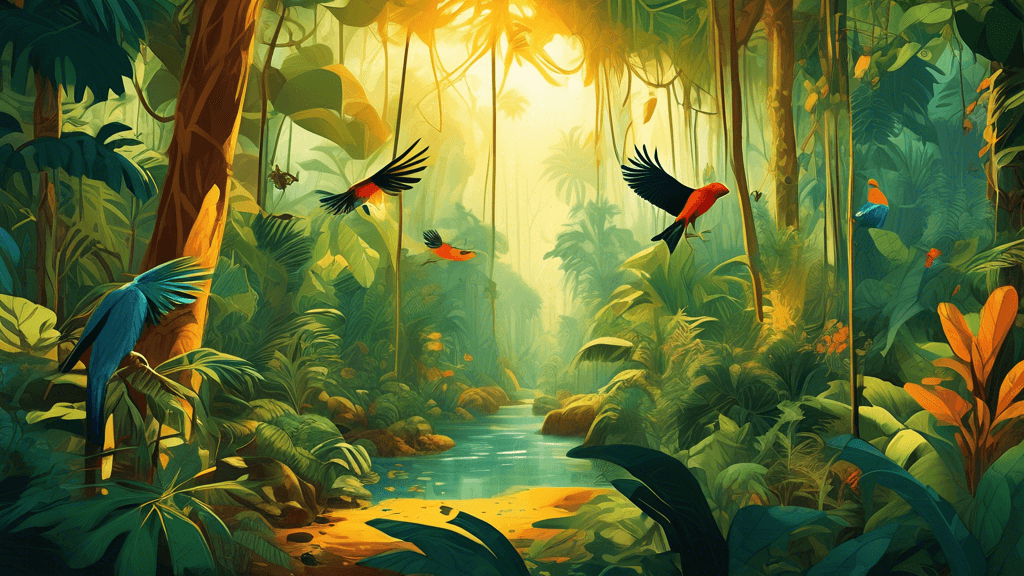
Capturing Biodiversity: Through the Lens of the Ecosystem
Share
The Art and Science of Photographing Biodiversity
Biodiversity photography is not just about capturing the beauty of nature; it's a vital form of visual storytelling that plays a crucial role in conservation efforts. But what does it take to photograph biodiversity with the integrity and depth it deserves? How does each click of the shutter contribute to our understanding and preservation of ecosystems?
Understanding Biodiversity Through Photography
Photography serves as a powerful tool to document wildlife and their natural habitats. The objective is to portray the interactions within ecosystems that are often unseen but are integral to ecological balance. But how can photographers ensure they are capturing more than just an image?
The process begins with understanding the subject deeply. This means studying the species and their roles within the ecosystem, knowing the time of day when certain behaviors emerge, and recognizing how these organisms interact with their environment. Each image should strive to tell a part of this intricate story.
Technical Challenges in Biodiversity Photography
Capturing the essence of biodiversity presents a unique set of challenges:
- Lighting Conditions: Wildlife photographers often work with unpredictable lighting, given the natural settings of their subjects. Mastering the art of using natural light is essential.
- Motion: Many species are in constant motion which requires fast shutter speeds and a keen sense for the right moment.
- Disturbance: Minimizing disturbance to natural habitats is crucial. Photographers must be mindful to keep their impact as low as possible.
Acknowledging these challenges is the first step towards overcoming them, setting the stage for a successful biodiversity expedition.
Conservation Impact of Biodiversity Photography
Why is biodiversity photography so important for conservation efforts? Each photograph has the potential to influence public perceptions and policy decisions. Images that highlight the beauty and complexity of biodiversity can help foster a deeper appreciation and urge for protection of these natural assets.
Consider the iconic photographs of polar bears in the Arctic. These images have become synonymous with climate change debates, showcasing how powerful visual narratives can influence global conservation agendas.
Examples of Ecosystem Photography Influencing Conservation
Biodiversity photography has repeatedly played a key role in conservation. There are countless stories where photographic evidence has led to the protection of species and their habitats. Here are a few:
- The designation of new marine protected areas following the widespread sharing of underwater habitat photographs showing undiscovered biodiversity.
- Increased funding and resources allocated to conservation programs after photographs of endangered species went viral online.
These examples underscore the potential impact well-captured images can have on conservation efforts.
Getting Involved: Tips for Aspiring Biodiversity Photographers
Are you interested in making a difference through photography? Here’s how you can get started:
- Educate Yourself: Learn about local wildlife, ecological interactions, and conservation issues.
- Practice Ethical Photography: Always respect wildlife and their habitats. Disturbance should be minimized; your presence should not alter their natural behavior.
- Share Your Stories: Use your images to tell stories that educate and inspire others to take action in conservation.
Becoming a biodiversity photographer requires patience, dedication, and a passion for both art and science. The journey is as challenging as it is rewarding, but the impact of your work can extend far beyond the beauty of the images you capture.
In Conclusion
Biodiversity photography intertwines the art of photography with the science of ecology in ways that few other fields can. It offers a unique perspective on the natural world, advocating for conservation through each shot. As we come to understand and appreciate the interconnectedness of life on Earth, photography remains a crucial tool in the conservation toolkit.
Are you ready to look through the lens of an ecosystem? Embrace the challenge, and play your part in preserving the breathtaking diversity of our planet.





